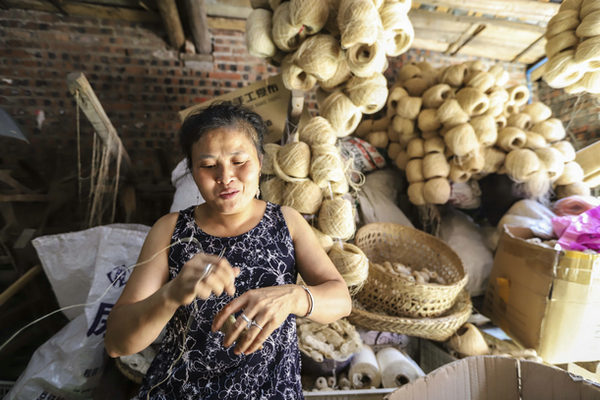 |
|
Experienced worker, who typically works 10-12 hours a day, can weave around 10 meters of cloth in a day.[Photo by Han Jiajun/Provided to China Daily] |
Tang Shoumin adroitly moves a shuttle over a web of densely-arranged vertical threads hung on an old-fashioned wooden loom at a grass linen plant in early August. And her feet step on the loom's pedal, moving in sync with her weaving.
Tang, who is in her 40s, has been making grass linen for more than two decades in Zhouxing town, in southwestern Sichuan province's Longchang city, where she was born.
The origin of the traditional cloth, made from ramie fiber, can be traced back to the Xia Dynasty (c. 21st century-16th century BC).
Grass linen is popular for its natural resistance to bacteria, durability and permeability, which keeps the body cool in summer. And it's also a stylish choice for those who want to highlight traditional Oriental beauty.
The cloth made in Longchang was much sought after by royalty during the Ming (1368-1644) and Qing (1644-1911) dynasties.
In 2009, the technique of making grass linen in Longchang was designated as Sichuan provincial intangible culture heritage.
Locals still use the age-old method to make grass linen, a technique that goes back over 1,000 years.
"Everything is done by hand, because you have to tie the broken thread when it breaks, which happens a lot," says Tang. "And the hotter it is, the easier for the thread to break."
In addition, the thread extracted from plants splits easily.
The thread broke twice as she spoke to us, but she fixed the problems so quickly that we could not make out how she did it. "Practice makes perfect," she says.
It takes 12 steps to produce grass linen, ranging from extracting the thread from the ramie, dehydration and starching to washing and dyeing.
Tang says that every step can significantly impact the quality of the finished cloth.